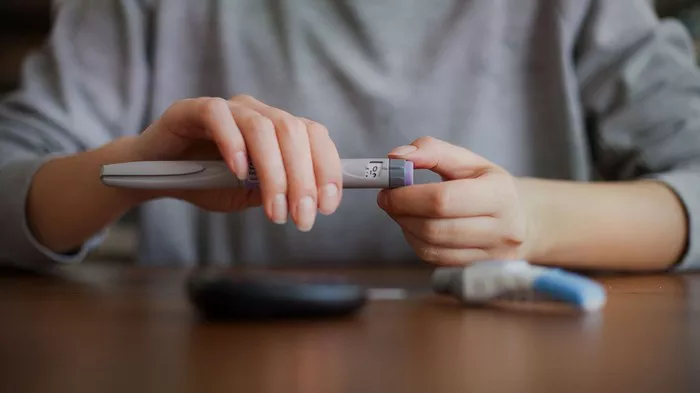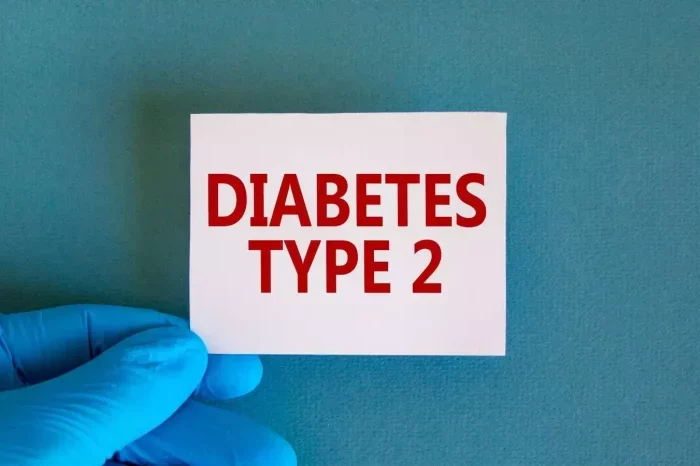The rapid advancement of technology has dramatically changed how people monitor their health, with smartwatches and other wearable devices playing an increasingly central role. For those living with diabetes, managing blood sugar levels is critical to maintaining health and preventing complications. In recent years, rumors and excitement have grown around whether the new Apple Watch might introduce blood sugar monitoring as a feature. In this article, we’ll explore the current state of blood sugar monitoring, the role of the Apple Watch in health tracking, the technology behind blood glucose sensors, and whether the new Apple Watch includes the capability to check blood sugar levels.
The Importance of Blood Sugar Monitoring for Diabetics
For people with diabetes, keeping blood glucose levels within a healthy range is essential. Blood sugar that is too high (hyperglycemia) or too low (hypoglycemia) can lead to immediate and long-term health issues. Regular blood sugar monitoring allows individuals to make timely adjustments to their diet, exercise, and medication to keep glucose levels in check.
Traditionally, blood sugar monitoring has been done using fingerstick tests with glucose meters or through continuous glucose monitors (CGMs) that involve placing a sensor under the skin. Both methods require some level of invasiveness, either through finger pricking or the insertion of a sensor.
Recent innovations have pushed the boundaries of what’s possible in glucose monitoring, leading to growing speculation about whether wearable devices like the Apple Watch will eventually include non-invasive blood sugar tracking as part of their health monitoring features.
The Evolution of Health Monitoring in Smartwatches
Apple has been a leader in integrating health features into smartwatches. The Apple Watch, introduced in 2015, quickly became more than just a fitness tracker. Over the years, Apple has incorporated several health-monitoring features, including heart rate monitoring, electrocardiogram (ECG) capabilities, blood oxygen level measurements, fall detection, and sleep tracking.
Each generation of the Apple Watch has brought incremental improvements in health technology, and rumors often circulate about upcoming features. For individuals with diabetes or those at risk of developing the condition, blood sugar monitoring would be a game-changing addition. The prospect of a wearable device that could track glucose levels continuously without the need for finger pricks is something the medical community and people with diabetes have eagerly awaited.
The Technology Behind Non-Invasive Blood Sugar Monitoring
To understand whether the Apple Watch can check blood sugar, it’s important to grasp the technology involved in glucose monitoring. Currently, there are two primary methods of monitoring blood glucose:
Fingerstick Glucose Meters: These involve pricking the finger to draw a small drop of blood, which is then analyzed by a meter to measure glucose levels. While accurate, this method is invasive and can be painful or inconvenient when done multiple times a day.
Continuous Glucose Monitors (CGMs): CGMs involve placing a small sensor under the skin that continuously measures glucose levels in the interstitial fluid. These sensors typically need to be replaced every 10 to 14 days and involve some degree of discomfort. CGMs provide real-time glucose readings, offering a more comprehensive picture of blood sugar trends.
However, both of these methods involve some level of invasiveness. Non-invasive blood glucose monitoring has been a goal of researchers for years, but it presents significant technical challenges. The idea is to measure blood sugar levels through the skin without breaking it, using methods like light spectroscopy, radio waves, or electromagnetic sensors. These technologies are still in development, and while promising, none have reached widespread, reliable use for glucose monitoring.
Does the New Apple Watch Include Blood Sugar Monitoring?
As of now, the new Apple Watch does not have the capability to check blood sugar levels directly. Apple has not yet introduced non-invasive blood glucose monitoring into its smartwatch, despite persistent rumors leading up to the launch of each new version.
While Apple has been working closely with the healthcare community and reportedly exploring the possibility of adding blood glucose monitoring, the technology is not yet ready for the mass market. This feature would require highly sensitive and accurate sensors capable of measuring glucose levels through the skin without breaking it, which has proven to be a significant engineering challenge.
That being said, Apple has taken steps to position the Apple Watch as a valuable tool for people managing diabetes. The Apple Watch can be paired with third-party apps and continuous glucose monitors (CGMs) that sync data with the device. This allows individuals to monitor their glucose levels conveniently on their wrist, but it does not involve the Apple Watch directly measuring blood sugar levels. Instead, it relies on an external sensor to send glucose data to the watch.
Third-Party Integration for Blood Sugar Monitoring
While the new Apple Watch cannot check blood sugar independently, it does have robust integration with third-party CGMs and apps that allow users to track and manage their blood sugar levels. Here are some of the most notable CGMs and apps that are compatible with the Apple Watch:
Dexcom G6: One of the most popular CGMs on the market, the Dexcom G6, can pair with the Apple Watch to provide real-time glucose readings. The sensor placed under the skin continuously monitors blood sugar levels and sends data to the user’s iPhone or Apple Watch. Through the Dexcom app, users can receive alerts, review glucose trends, and track their blood sugar levels directly on their wrist.
Freestyle Libre: Another leading CGM, the Freestyle Libre, offers a similar capability. Though users must scan the sensor periodically to get real-time readings, the data is transmitted to their iPhone and Apple Watch, making it easy to monitor blood glucose trends throughout the day.
Sugarmate: Sugarmate is a third-party app that connects with several CGMs to provide a user-friendly interface for monitoring blood sugar levels. The app integrates seamlessly with the Apple Watch and can provide alerts, trends, and data analytics related to glucose levels.
One Drop: One Drop is an app designed for diabetics that offers tracking tools for glucose levels, medications, food, and activity. While it does not offer continuous glucose monitoring, it can be used to log blood glucose readings from fingerstick tests and provides valuable insights into blood sugar patterns.
The Future of Blood Sugar Monitoring and the Apple Watch
While the current generation of the Apple Watch does not offer direct blood glucose monitoring, the future remains promising. Apple has invested heavily in health and wellness technology, and the company is reportedly working on non-invasive glucose monitoring behind the scenes. Several reports suggest that Apple is exploring different methods of non-invasive glucose measurement, including optical sensors that use light to detect glucose levels in the blood.
Given Apple’s commitment to advancing health technology, it is likely that future versions of the Apple Watch could include this much-anticipated feature. However, the timeline for its release remains uncertain. Developing a reliable and accurate non-invasive glucose monitor that can be built into a smartwatch is a complex challenge, and Apple is unlikely to release such a feature until it meets the company’s high standards for performance and reliability.
In the meantime, diabetics can continue to benefit from the Apple Watch’s existing health features and third-party integrations, which make it easier to track and manage blood sugar levels. As continuous glucose monitoring technology improves and becomes more integrated with wearable devices, the Apple Watch will likely play a central role in diabetes management.
Potential Benefits of Non-Invasive Glucose Monitoring in a Smartwatch
Should Apple or another tech company successfully introduce non-invasive glucose monitoring into a smartwatch, the potential benefits for diabetics would be immense:
No Finger Pricks or Invasive Sensors: The biggest advantage of non-invasive glucose monitoring is the elimination of the need for finger pricks or implanting sensors under the skin. This would make monitoring blood sugar more comfortable, convenient, and accessible for individuals with diabetes.
Real-Time Monitoring: With continuous, non-invasive glucose monitoring, diabetics would have real-time access to their blood sugar levels. This would allow for more timely adjustments to diet, exercise, and medication, improving blood sugar control and reducing the risk of complications.
Better Quality of Life: Managing diabetes can be a constant source of stress and discomfort. By removing the need for fingerstick tests and CGMs, non-invasive glucose monitoring could greatly improve the quality of life for diabetics.
Integration with Other Health Metrics: A smartwatch that can monitor blood sugar could also provide other valuable health data, such as heart rate, activity levels, sleep patterns, and blood oxygen levels. This comprehensive health data could be used to gain a better understanding of how different factors influence blood sugar levels and overall health.
See also: What Should Normal Blood Sugar Be in the Morning?
Conclusion
While the new Apple Watch does not yet include the ability to check blood sugar independently, it is still a valuable tool for diabetics, thanks to its integration with third-party continuous glucose monitors and health apps. Apple has made significant strides in health tracking, and there is strong speculation that non-invasive blood glucose monitoring may be added in future versions of the device.
For now, diabetics can continue to rely on existing CGMs and apps to track their blood sugar levels in real time, with the convenience of viewing the data directly on their Apple Watch. As technology continues to evolve, it is only a matter of time before smartwatches offer even more comprehensive health monitoring, including blood sugar tracking, revolutionizing diabetes management.
Related topics:
What Is a Normal Blood Sugar Level After Exercise?

























